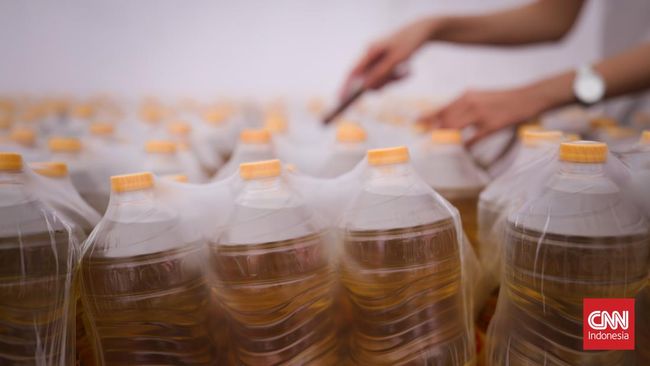The polemic of scarcity cooking oil in Indonesia is not only in the national spotlight, but also foreign media. More ironically, the scarcity of cooking oil occurs in palm oil producing countries (CPO) is the world’s largest.
The Economist highlighted people in Central Java to East Kalimantan who had to queue to buy cheap palm cooking oil.
“In East Kalimantan, on the island of Borneo, which produces nearly two-fifths of Indonesia’s palm oil, at least two housewives died while waiting in line,” he explained. The Economist as quoted, Monday (4/4).
It is known that last February, the Indonesian government set the highest retail price (HET) for cooking oil at Rp. 14,000 per liter for packaged oil and Rp. 11,500 for bulk oil.
Overnight, shelves in various markets and retailers were empty in various parts of Indonesia. When palm cooking oil is empty, most Indonesians lose access because imported vegetable oil is an unaffordable luxury.
The funny thing is, when the packaged cooking oil HET was removed, the packaged cooking oil miraculously reappeared. But now, prices have more than tripled.
RI Ombudsman member Yeka Hendra Fatika blamed the increase in cooking oil prices on several factors, including the Russia-Ukraine war and the COVID-19 pandemic.
As of February 2022, the price of crude palm oil (CPO) soared by 40 percent compared to the previous year.
The government in January imposed a domestic market obligation (DMO) of 20 percent for all producers, which is expected to push down retail prices.
However, it only lasted a month, after suppliers vehemently refused, the government removed DMO, in favor of imposing higher export levies on CPO.
Cooking oil under the initial DMO scheme was sold at a fixed price, which producers said made it difficult to cover production costs. “The big difference between the prices of CPO and DMO is what causes panic buying and hoarding that occurs,” explained Yeka.
Meanwhile, Arie Rompas from Greenpeace Indonesia believes that the government should pursue industrial oligarchs who often hoard supplies. In 2019, Indonesia produced 47.1 million tons of CPO, of which 76 percent was exported.
Eddy Hartono of the Indonesian Palm Oil Association (GAPKI) said the initial 20 percent DMO should have exceeded local demand. Therefore, he suspects oil is ‘lost’ along the distribution chain.
Indeed, in mid-March, the government found millions of tons of cooking oil hoarded by conglomerates. The District Attorney’s Office in Jakarta, which is investigating the scarcity of cooking oil, said they were investigating the role of the cartel.
(wel/one)
–


